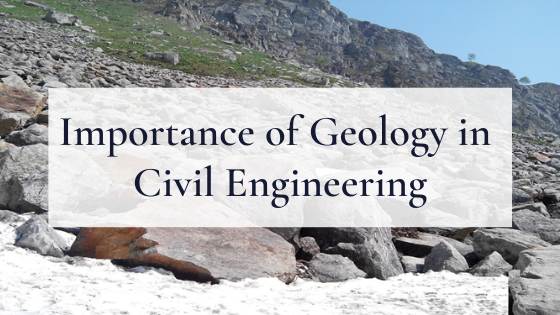Rumored Buzz on Geotechnical Engineering For Construction Projects
Rumored Buzz on Geotechnical Engineering For Construction Projects
Blog Article
6 Easy Facts About Geotechnical Engineering For Construction Projects Shown
Table of ContentsGeotechnical Engineering For Construction Projects - An OverviewGeotechnical Engineering For Construction Projects Fundamentals ExplainedGeotechnical Engineering For Construction Projects Things To Know Before You Get ThisThe Ultimate Guide To Geotechnical Engineering For Construction ProjectsFacts About Geotechnical Engineering For Construction Projects UncoveredNot known Details About Geotechnical Engineering For Construction Projects The Ultimate Guide To Geotechnical Engineering For Construction Projects
Principles and Technique of Ground Enhancement. Ground Renovation Concepts And Applications In Asia. Design analysis in rock technicians.Cengage Understanding, Stamford, 666 p. Atkinson, J., 2007. The technicians of soils and foundations. Taylor & Francis, N.Y., 442 p. Floating Offshore Wind Wind Turbines: Reactions in a Sea state Pareto Optimum Designs and Economic Analysis, P. Sclavounos et al., October 2007. Nicholson, D, Tse, C and Penny, C. (1999 ). The Observational Method in ground engineering principles and applications.
Unknown Facts About Geotechnical Engineering For Construction Projects
Laboratory and field testing plays a vital duty in this procedure. By extracting samples from the earth's subsurface and using a suite of examinations, geotechnical engineers can anticipate the behaviour of soil layers and evaluate their viability for different building and construction endeavours. The essence of geotechnical design in civil design can not be overemphasized, attributable to several aspects: The initial step in any geotechnical research entails establishing the soil type at the building site.
Understanding these attributes ensures that just suitable soil types are selected for the development, therefore averting potential structural failings. The foundation serves as the bedrock of any type of building job. Picking the suitable structure type is a decision that hinges on the extensive evaluation supplied by geotechnical engineering. This makes certain the longevity and stability of frameworks by suiting the loads they will certainly birth.

Geotechnical website examination is a vital action in the preparation and execution of any type of building and construction project. It entails the collection and evaluation of data related to the physical properties of dirt and rock below a suggested building and construction website. This details is important for the style and building and construction of secure, steady, and sustainable structures.
Not known Factual Statements About Geotechnical Engineering For Construction Projects
In this blog, we will dive into the relevance of geotechnical site investigation, its different components, and just how it benefits building and construction projects. Geotechnical website investigation, likewise referred to as subsurface exploration, involves a collection of activities targeted at establishing the dirt, rock, and groundwater conditions at a construction website. The main goals are to recognize prospective geotechnical dangers, assess the design buildings of subsurface products, and give suggestions for the layout and building of foundations, retaining wall surfaces, and various other frameworks.
The workdesk research study aids in determining prospective geotechnical problems and intending the subsequent fieldwork. This includes observing the topography, water drainage patterns, existing frameworks, greenery, and any type of indications of instability or disintegration.
The Best Guide To Geotechnical Engineering For Construction Projects
Shallow test pits are dug deep into to directly observe and example the soil and rock. This approach works for examining the top layers of the subsurface and determining near-surface hazards. Non-invasive geophysical methods, such as seismic refraction, ground-penetrating radar (GPR), and electric resistivity tomography (ERT), are made use of to map subsurface problems and identify abnormalities.
Soil and rock examples accumulated more information throughout the area investigation are subjected to research laboratory testing to identify their physical and mechanical residential or commercial properties. These examinations give essential information for geotechnical analysis and style.
The key advantage of geotechnical website investigation is guaranteeing the safety and security and stability of structures. By recognizing the subsurface conditions, designers can design foundations and other architectural aspects that can stand up to the loads and ecological pressures they will be subjected to. This decreases the risk of settlement, subsidence, and architectural failure.
Getting The Geotechnical Engineering For Construction Projects To Work
Comprehending soil qualities can assist the selection of excavation techniques, dewatering techniques, and ground enhancement steps. This makes sure efficient and risk-free building methods. Geotechnical website investigations are commonly required by building codes and guidelines. Abiding by these requirements makes sure compliance with legal and safety and security requirements, preventing possible legal obligations and task hold-ups.
This details is invaluable for task managers, engineers, and service providers in creating sensible timetables, budget plans, and backup plans. Geotechnical Engineering for Construction Projects. High-Rise Building in a Coastal AreaIn a coastal city, a high-rise property structure was intended on a site with believed loose sand down payments and a high water table. A thorough geotechnical investigation, consisting of borehole boring, CPT, and geophysical surveys, was carried out
Geotechnical Engineering For Construction Projects Things To Know Before You Get This
Based upon these findings, the structure style was modified to include deep heap structures expanding right into steady strata, and ground renovation methods, such as vibro-compaction, were executed to alleviate liquefaction threats. This positive technique ensured the safety and security and security of the building while staying clear of costly post-construction removal. Facilities Growth on a Sloping TerrainA major infrastructure task, entailing the building and construction of a highway and bridges, was planned on a hilly terrain with steep slopes.

The Leaning Tower of Pisa (Italy), an iconic architectural marvel, is infamous for its unintentional tilt from significant geotechnical issues. The tower's foundation was inadequately designed to deal with the soft, unsteady soil below it, resulting in irregular settlement and its distinct lean. Our world is populated with impressive infrastructure projectsfrom towering high-rises to stretching bridgesall standing testament to the advancement of the various building tools and methods available.
Geotechnical engineering is a specific area within civil engineering that focuses on researching the behavior of planet products. This branch dives deep right into the groundinvestigating how the dirt, rock, and groundwater at a building and construction site can find out here now influenceand be affected bythe facilities that we set up on and right into them. Prior to a solitary block is laid or a concrete structure poured, geotechnical designers probe right into the earthgathering vital information about the website's dirt composition, rock structure, and groundwater degrees.
Excitement About Geotechnical Engineering For Construction Projects

is a tool used to assess the integrity and load-bearing capability of stacks during installment, leveraging the concept of wave propagation. It optimizes building performance by giving real-time assessments, therefore making certain risk-free and effective stack structures. Among the practical applications of geotechnical engineering includes making a decision and performing the appropriate approaches for foundation building.
Load driving stands for more than the plain act of putting architectural elements right into the ground. As a matter of fact, it is a very carefully orchestrated procedure of moving a structure's load past the much less secure dirt layers closer to the surfacedown to the extra considerable strata blog here that lie below. In the situation of heap driving, consider just how geotechnical designers adeptly use this method to uniformly distribute the framework's weight.
Report this page